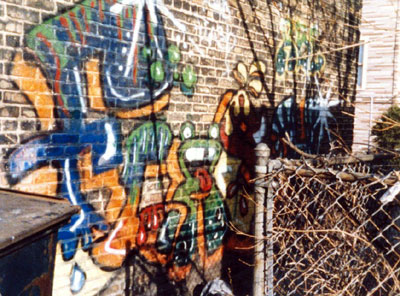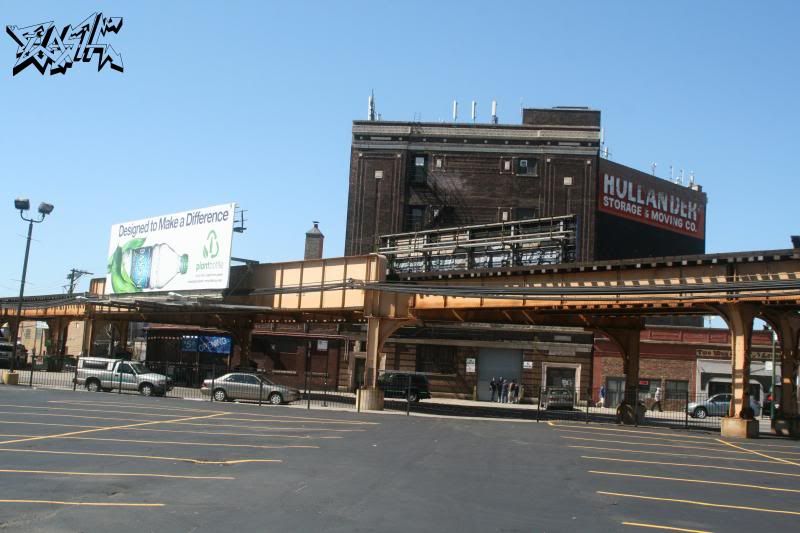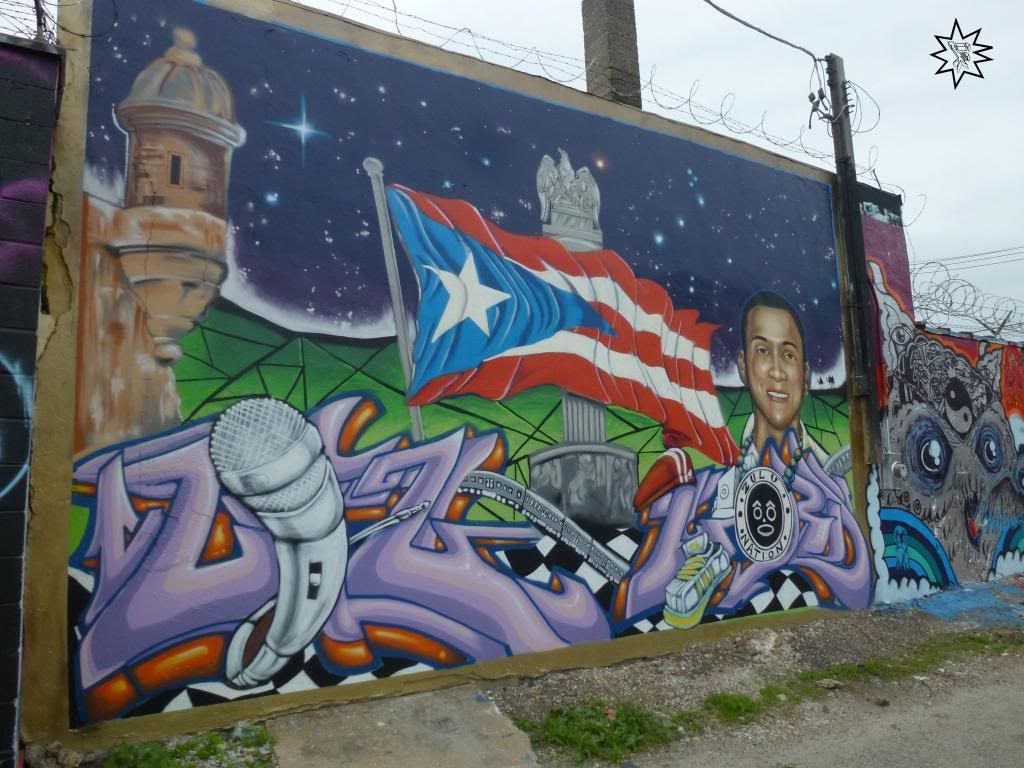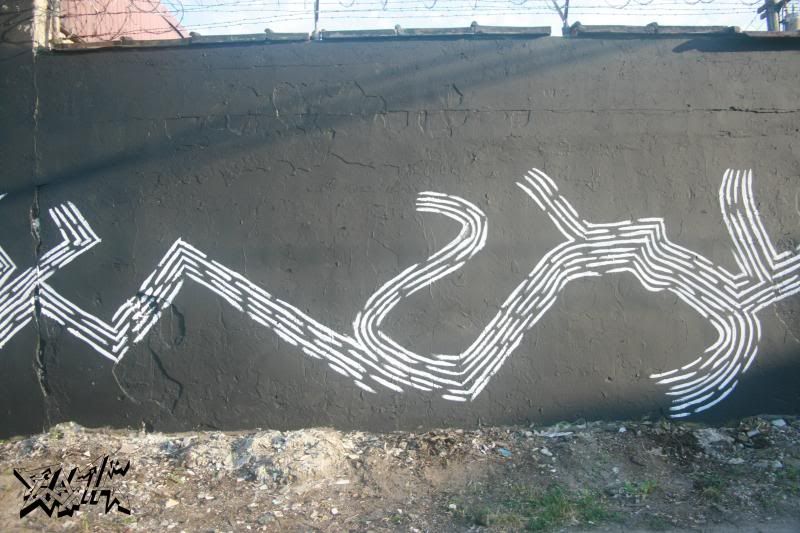I write this post a week or so late, as is appropriate, since it feels Spring semester that Time runs several miles ahead of me, in every instance.
In my Rhetoric and Culture course, which is focused on public art, we have discussed visual methodologies, spatial segregation and control, site specificity, monuments and official discourse, muralism and vernacular rhetoric, graffiti and the social production of criminality, street art and the classed and raced approaches to proper and improper public art, and public protest as performance art. Last week we had virtual speakers, Chicago based writers, educators, and graffiti historians Werm One, Trixter Feds, and Flash of the ABC crew. Either making contact through face time; conference call; or a facebook chat, these brilliant folks fielded questions from my students, and offered their own insights on the history and representation of graffiti in Chicago.
We first got a hold of Trixter. He introduced himself as a Chicago writer who got into the scene from being a b-boy. He described the history of contact between New York and Chicago graffiti. He has been a bboy for 35 years, entering the scene as part of the “burgeoning hip hop movement in the early 80s and so he represents that experience.” He was one of the original developers and pioneers of graffiti style in Chicago in the 90s.
 |
| 1985: Trixter, on Blue Line by Logan Square. http://www.artisticbombingcrew.com/photos.asp?artist=6&type=2 |
The first student asked what he thought about graffiti being described as egotistical, or selfish. He answered:
Is it selfish to express yourself? For the voiceless who is un answered and uncounted? People are not aware of the fact that graffiti, which seems to have an idiosyncratic persistence, has persisted for a reason. The need and desire to be heard.
Another student asked about what happens to graffiti when it gets placed in the gallery:
In a gallery context it is a patron appreciating the art form. It is distinct from the internal perspective of the writers, the practitioner side. Graffiti [comes before] the hip hop movement, it is one of the most primal forms of writing. There are debates about large scale murals and productions, a debate about keeping it real and true to its origins, that sometimes it becomes much too commerical. My take on legal graffiti is that there is a need for public space. Graffiti is always commercialized, but if you want to stay true, that is the artist’s prerogative. But there is a lack of education [about graffiti culture] so what I am working to do is make it so that there is greater awareness and education about graffiti in the larger population. Graffiti [speaks to] a macroscale, a history passed down through generations.
Another asked about the distinction between graffiti and street art:
To me, it seems that the difference is what attracts the viewer to the object to be seen and recognized. So the basis for when people say something is graffiti, or something is street art, it is more about the image or the text, like Mickey Mouse or Donald duck…”graffiti” is not the original word. That is the label society attached to our practice, it means “scratches and scrawling” what what we do is writing, with paint and material and ink. Graffiti is writing, the symbolic, while street art is more about scenery, background, characters…scenes in the street. The issue with graffiti is writing.
Trixter left the students with a last, powerful thought:
The number one thing that you must know, about graffiti and illegality, to think about in considering graffiti and writing and public space, is that graffiti precedes property ownership. Graffiti precedes property ownership. There have been different aspects of writing for thousands of years…It has been scientifically verified that graffiti is the oldest form of art…where people would spray a color medium through the mouth onto the wall. It is the nature of man to leave markings.
We next talked to Werm, who called from his car, propping the phone on this wheel such that it spun around while we talked. I held the phone up like a microphone, plugging the sound into the stereo, and Werm explained that he wrote with CAB crew, has been writing for decades, and now makes a living as a professional artist. Students asked about whether he thinks that it is bad to do graffiti as a kind of commercial art, and he explained that he is able to do it as both art, and livelihood. He remarked that the legal side was nice because you can interact with people, see the enjoyment your work gives them. He explained that his main clients were people who wanted custom rooms painted; cars airbrushed; or t shirts at kids’ parties. A student asked about whether his family did not like that he was a writer. He reflected, noting that his shift to a more legal realm allowed for him to integrate family and work, “they are proud of me,” he reflected, and he noted that he has taught many of his kids to paint. He also explained for the students the reason for tagging– that it is a form of fame, but also, of practicing, it is the practice that enables one to get the skills to do incredible lettering or image based work, such as the 15-foot-jesus he produced in a recent mural. He rapped from one of his songs: “Started out a toy but the kid had heart,” he started out unskilled but with determination, hard work, and practice, he developed his skill set.
Last but not least we facebook chatted with Flash, who greeted us wearing a helmet covered in graffiti. He is an engineer at Rydell Sports, and so it was a funny but powerful way of demonstrating the linkage he makes between graffiti worlds and work and family life.
He first explained to the students his history. He started painting in 1983, after he saw the movie “Wild Style,” and painted the Blue Line in Chicago. ABC was among the first crews to apint on roof tops, and the first generation that learned about history in Chicago. He documented everything during that period, gaining the nickname “Flash”. In 1987 he was arrested and given a choice: either the military, or jail.
 |
| 1984: Flash, “Seen.” http://www.artisticbombingcrew.com/photos.asp?artist=5&type=2 |
After serving in the military, Flash became a mechanical engineer for Rydell Sports. 12 years ago he returned to the graff scene, and started the ABC website, which he curates, and gave us a guided tour through.
With my computer facing the screen so that Flash could guide me, he narrated a tour through the ABC (Artistic Bombing Crew) website, a dense archive and platform for photographs and discussions about Chicago’s graffiti past and present.
Graffiti has been harshly prosecuted in Chicago, he noted, and Alderman Richard Mel took the ban on spraypaint to hte Supreme Court, making Chicago one of the first cities to have a ban on spraypaint. As a result, graffiti was quashed in the North Side from 1987 to 2003.
When Flash returned to the graffiti scene, due to the hostile climate for graffiti, he also began to search of spaces for legal productions, which mark the beginnings of Project Logan, a wall at Fullerton and Milwaukee that Flash curates, with the permission from the Logan Square alderman. The wall is in a coveted location, next to the Blue Line which connects Chicago from East to West, and is ridden by over 80,000 people, meaning, in Flash’s opinion, that likely 50,000 plus people will see the wall.
 |
| Project Logan view from Train. June 2013. http://www.chicagograffiti.com/forums/topic.asp?TOPIC_ID=4389&whichpage=2 |
The wall is in constant rotation of work, and is divided into three sections: Artist, Crew, Bombers (evoking Flash’s Crew name, ABC, Artistic Bombing Crew). The bomber section is for letter based productions and rotates every two weeks. The Artist section includes graffiti murals, mixing text and imagery, and stays up for about a month. Crew walls include collaborative, crew based productions. The wall is by Hollander, a historic site for graffiti productions.
 |
| View from Project Logan Wall. http://www.chicagograffiti.com/forums/topic.asp?TOPIC_ID=4389 |
Logan Square, he explained to my students, is a neighborhood that played a key role in Chicago’s graffiti history. Between 1983 and 1987 writers held meetings at the Eagle.
 |
| Project Logan. 2014. http://www.chicagograffiti.com/forums/topic.asp?TOPIC_ID=4389&whichpage=2 |
One of the artists who first was put on the Project Logal wall, KLTA (Keith Lawrence Turner Alexander) was, according to Flash, Chicago’s first street artist: he used brush and paint to create line drawings, white on black on Chicago’s rooftops.
 |
| KLTA. 2013. Project Logan. http://www.chicagograffiti.com/forums/topic.asp?TOPIC_ID=4389 |
Graffiti, Flash argued, is for the masses. However, it has also been commodified and commercialized by the mass market, evident in video games with writers and ludicrous shows like Street Art Throwdown. “How do you control something in a free society?” he mused. He also explained that there is a new generation that still works illegally, each generation has its own subculture, and as part of this one, freight and train bombing.
One of my students asked Flash if graffiti gets its impetus from the thrill of doing illegal work, and she asked if less artists would do it if it was legal. Flash responded that there is always a legal and an illegal side, and that some artists go into graphic design. “There will always be more [writers practicing] the vandalism side, but they [illegal bombers] stay in the game longer now.” He also marked that there is a difference between permission graffiti, street artists, and bombers.
Another student observed that Flash breaks all the stereotypes about writers being angry, young, criminal, secretive, thoughtless vandals. He has a family, he is employed, and he works with communities. “How do you feel about these stereotypes?” she asked him.
Flash sighed. He explained that the art form contributes to urban growth. “Anywhere a graffiti or permission wall grows up, an art district grows out of it. I see my rent going up: Since I put up the wall in Logan Square my rent is $200 more a month. Seeing graffiti as vandalism is about broken window theory, but when graffiti is seen as an art form the neighborhood improves.”
Here Flash marks both the fallacy of broken windows theory, but also the perils of recognition. Graffiti is seen as alluring, but this allure creates neighborhood buzz that makes higher income brackets move in and rachet up rent costs.
He also reflected on the continuation of illegal graffiti, contextualizing it to demonstrate that graffiti isn’t a priori disregard for property or “community”, it is a result of social conditions of marginalization and neglect. “In Chicago there are a lot of schools being shut down, Chicago Public Schools, and so these kids have nothing to do, they go [and write on the buildings] you can see it on Flikr…almost fifty schools were closed.”
Finally, a student asked him what he thought about yarn bombing, and the racialized and gendered politics of its adulation in the press versus the stigmatization of graffiti. “I sometimes want to light it on fire,” he laughed, echoing that he has had to fight, for years, to get some legal space for graffiti, whereas yarn bombing, which is illegal, is not prosecuted at all, a kind of bourgeois aesthetic.
At the end of class I always have students fill out a discussion journal page, asking what they said, heard, and learned from the combination of reading and discussion. This week they were especially excited. One noted:
“I loved everything our guest speakers had to say! Each brought his own view to the debates over graffiti. Trixter made the point that even the term graffiti was assigned by society and that writing public spaces precedes property ownership. In this way, he solidified and supported my views of graffiti as street art…I also loved werm’s view’s on professionalism. It seems as though the difference between graffiti and street art is payment and permission.”
Another wrote: “Flash also said that he did not consider his work graffiti, he considered it art. this was a contrast from how graffiti is often talked about in popular culture…these writers we spoke to very much considered themselves public artists.”
And another: “I really liked when Werm talked about his art of a 15 foot Jesus. He was most proud of creating something that a mass audience can enjoy. This surprised me because I always viewed graffiti as art that is more personal to the artist and not meant to be understood by others. I was very impressed by Werm’s perspective on this…Trixter’s take on graffiti as not vandalizing but rather important for letting your voice be heard was very interesting to me. He explained how graffiti focuses on words as a symbolic figure.”
And another: “These artists call themselves WRITERS not scratchers. After speaking with Werm I was totally in agreement about street art being something of a vernacular art, done by a community, for the community…Flash really focuses on teaching people about the history of ABC and their culture…the fact that he breaks all of the stereotypes that usually gets associated with these types of artists is just so eye opening.”
These comments are significant. The majority of these students have had little to no personal contact with graffiti culture, they only know of it how its been represented in media and film (largely negative representations). Many are from smaller towns in middle Pennsylvania, mini-cities that are largely homogenous, and largely white. A very few are from Philadelphia and a few from Pittsburgh. Only a few are from out of state. The comments show that the public can and should be educated about graffiti, graffiti literacy needs to be promoted as a way to foster greater understanding of the social motivations and nuanced style that informs this art movement.
A hearty thanks to the writers for their time and brilliant expertise, and to the students for their thoughtful questions (and help managing technology).


